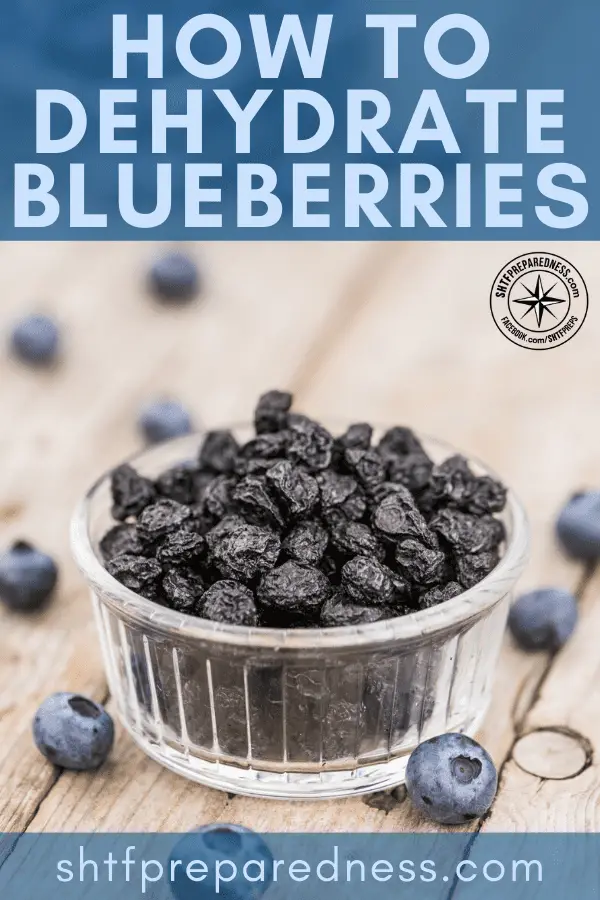I have buried many a blueberry bush in my yard and harvested those first berries of the year only to find that the bushes would die over winter or even before!
Still, I would go back for more because having access to homemade dehydrated blueberries for my stockpile is worth it. Knowing how to dehydrate blueberries means that you can have them all year.
Growing blueberries is no picnic, but it can be done. We are going to discuss this, too.
The little blueberry is packed with antioxidants and nutrition that promote great health throughout the body. There is no reason not to try your hand at growing and preserving these berries.
Another great thing about blueberries is how versatile they are in cooking. They can be used in sweet and savory preparations alike.
In the supermarket, blueberries are very expensive. The reason they aren’t in refrigerators all over the nation, like bananas, is because of the price per pound.
Let’s see if we can learn how to grow and dehydrate blueberries. This way, you can enjoy them all year!
Health Benefits of Blueberries
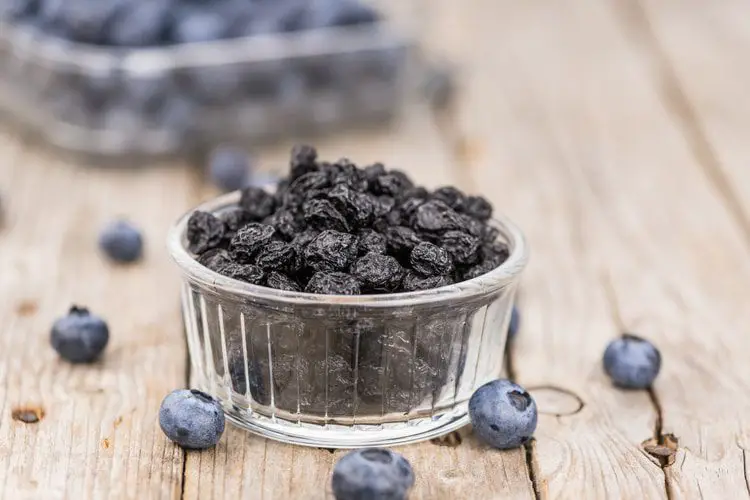
There is no fresh food that packs more of a nutritious punch than the blueberry, for its size.
These little berries are dark and their flesh is purple. That all equals serious nutrition. Only the goji berry or the acacia could rival it.
So, what are the health benefits of eating blueberries?
Strong Bones
You might not think of it but blueberries are actually very high in calcium. Calcium is essential for building and maintaining strong bones.
Protected DNA
Free radicals and oxidation are at work on your DNA each and every day. It is because of this process and its increase that we grow old. It’s practically unavoidable. Eventually, it will lead to our impending death.
By eating foods like blueberries that are so high in antioxidants—there are few as high as blueberries—you can stave off the damaging effects.
Heart Disease
One of the most prominent antioxidants in blueberries is called anthocyanins.
This antioxidant, in particular, has been studied and shows a 32% decreased risk of heart attack compared to those who consume low levels or none of this antioxidant.
Infection
A diet rich in blueberries can also stave off a UTI. These are not that big of a problem in today’s world but you do not want to deal with them in an SHTF scenario.
Blueberries and cranberry are a great combination to combat this type of infection.
Muscle Recovery
As you can see, the health benefits of eating blueberries are wide-ranging. They are also great for muscle recovery and should be an important part of your post-workout diet.
Brain Health and Memory
The consumption of blueberry juice has been studied with regard to increased brain function. People with mild cognitive impairment showed improvements in 12 weeks of consuming the juice on a regular basis.
Our medicine really does come from the plants around us. We can heal many of our problems with just a few changes and improvements in our diet.
Knowing how to plant your own blueberries means that you can grow this medicine in your own backyard! That could be just the kind of access you are looking for.
In the next section, we are going to explore tips for growing blueberries.
How to Grow Your Own Blueberries
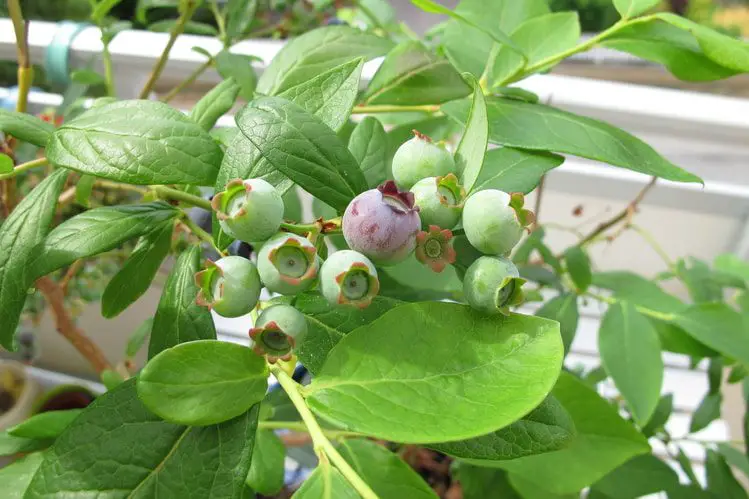
Do you know you can even grow blueberries in pots? While they are not the easiest plants to please, you can make them work. Like anything else they just have some needs that must be met.
Once you understand what blueberries need, you can care for these plants effectively and see them produce blueberries year over year for you.
Couple that with knowing how long to dehydrate blueberries, and you will be enjoying these little nutritious berries in a variety of recipes!
Variety
Where you are reading this article has everything to do with the variety of blueberries you should plant. Blueberry plants have been hybridized to have success in most climates throughout the nation.
Your job is to understand your growing zone and the conditions in your area. This will allow you to choose the most effective variety.
Soil
Blueberries need help breaking down the nutrients in the soil. They cannot uptake nutrients like most plants.
This is why they prefer acidic soil, which helps break down that organic matter into nutrition for the plants.
In most cases, you are going to add peat moss to your soil so that you can raise the level of acidity. If you don’t have amended soil for acidity, your blueberries will be starved of nutrition and will die.
Timing
When to plant blueberry bushes is just as important as how you plant them. The best time for growing blueberries is in the late fall or spring.
Blueberries are going to need time to establish themselves and take in enough nutrition to grow fruit in the summer.
Place and Space
Where you plant blueberries in the yard is important as well. These bushes like full sun. You also want to space your blueberry plants 2 to 2.5 feet apart for the best growth and berry production.
Deep Water
Your blueberry bushes are going to want a nice, deep watering each week. Once per week, water them deeply, and take your time with this. A nice slow drip will get the water deep and keep them moist.
Mulching
Because blueberries love moisture, it’s important that you mulch them heavily. This will keep the moisture locked in and keep those roots just the way they like it.
Leaf mulch is high in acidity and easy to rake and chop in your own yard. It might be great for this application. A pint of blueberries is going to cost you around $3.
As a little snack, that is not so bad, but if you want to really integrate things like blueberry juice and lots of blueberries into your diet, you will need access to more blueberries. Growing them is a much more cost-effective means of sourcing them.
How to Dehydrate Blueberries
The process of taking the blueberries that are packed with juicy nutrition and dehydrating them is actually not as hard as you might think. It takes a heat source that can remain consistent and pretty low for hours at a time.
We are going to look at three methods, in particular, to dehydrate blueberries. Most people employ the use of a tabletop dehydrator, an oven, a solar dehydrator, or some people just let the air dry them. All of these methods work.
Prep
To help the process along, we are going to start by washing the blueberries and leaving them to dry in a colander.
You will want to use small wire racks or pans with parchment paper lining them. Be sure that your wax paper is nonstick because you could get some sticking with the small blueberries in their dehydrated state.
Oven Drying Blueberries
You can dehydrate blueberries in a conventional oven. To be effective at this, you are going to need to use the WARM setting on your oven. This is just enough heat to keep the berries losing moisture under that consistent heat.
Preheat the oven and add your racks to the oven. Wire racks are the very best for this but sheet pans will work, too.
Your blueberries are going to shrink. If you are dealing with wild blueberries, they might be pretty small already! So don’t be surprised at the size of your blueberries after dehydration.
You will need about 8 hours on the warm setting for your blueberries to dry out. They will likely have a little bit of a meaty texture to them.
Because of their size, you don’t want to take them too far beyond this point. If you oven-dry them for far too long, then you are going to have berries that have a burnt taste.
Allow the oven to cool down with the berries inside; this will allow your blueberries to dehydrate even further.
Solar Dehydration
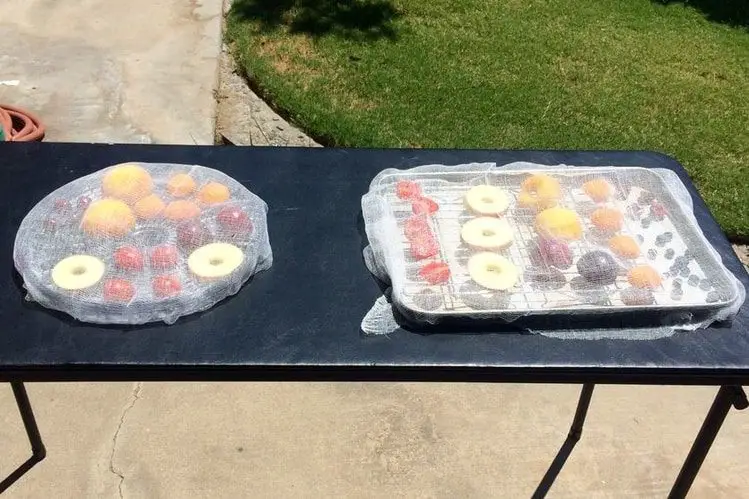
by cfremming via instrutables.com
We have been dehydrating foods using the sun and wind for a very long time.
To effectively dehydrate blueberries in the sun, you are going to want some sort of dehydrator that captures the sun’s heat and holds it.
I have made these with cardboard boxes, aluminum foil, and plastic. You could up the ante and buy a real solar dehydrator or build one of your own.
No matter which route you take, it’s going to take a couple of days to fully dehydrate your blueberries in the sun. This is assuming you have some warm weather and a good, sunny sky. In cold weather, dehydration will take much longer.
Remember, our process is all about consistent low heat over a long period of time.
Countertop Dehydrator
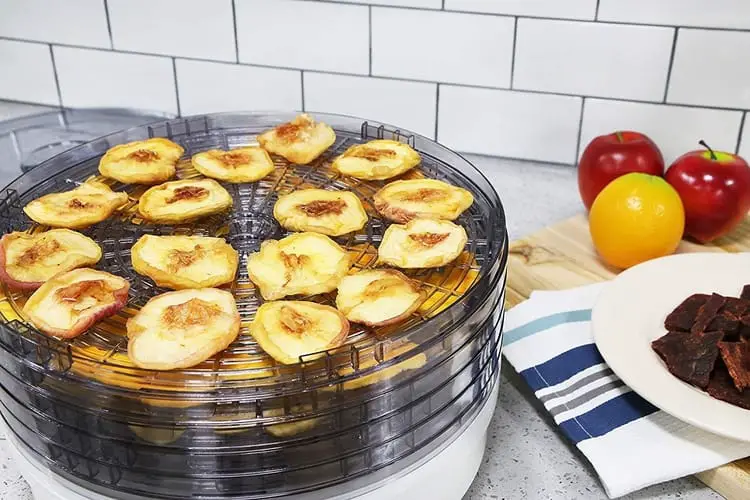
If you are reading this article and getting really excited, well, it’s probably worth investing in countertop dehydrators. You can even make your own DIY dehydrator.
Either way, you are going to want to have a means of dehydrating that is simple and easy. Most people who fall head over heels in love with dehydrating and storing food invest in a quality countertop food dehydrator.
To dehydrate blueberries in a countertop dehydrator, you are going to want to preheat your unit to 120 degrees.
Line your trays with blueberries and dehydrate them for about 8 hours. You can slice a blueberry in half to check for dryness.
Countertop dehydrators make life very easy.
How to Store Dehydrated Blueberries for the Long Term
After you have decided how you are going to dehydrate your blueberries and you have done the deed, its time for storage.
If you want to store blueberries for the long term, you are going to need three things.
- Mylar bags
- Oxygen absorbers
- 5-Gallon buckets (or small, thick-walled plastic containers)
Your dehydrated blueberries are going to be very small. This means you are going to be able to fit a lot in a small container.
Fill your mylar bags with blueberries and drop a single oxygen absorber in each bag. The type and strength of the oxygen absorber is going to depend on the size of the bag and how much is in each bag.
Using an iron or a hair straightener, you can heat seal the mylar bags. Do your best to press any excess air out of the bags.
Then place your mylar bags into the plastic containers. Don’t forget to date these so you know when they were packed.
How Long will Dehydrated Blueberries Last?
If you store your dehydrated blueberries for the long term, they will last a very long time.
You could likely store these berries for 20 years! The oxygen absorbers will make it very hard for any bugs to survive and for anything to grow.
This is the basis for all long-term dry food storage.
If you store your berries in Ziploc bags, you will get about a year out of the blueberries. After a year, you are going to be able to eat them, but they will not be as good.
You could also freeze your dehydrated blueberries. To be honest, these berries will last as long as your freezer! However, they will pick up an off taste and texture after about a year.
How long you store these blueberries depends on the quantity that you dehydrate. Don’t waste your time storing them for 20 years if you only have a few cups.
Blueberry Fruit Leather
Fruit leather is an incredible snack that can be rolled up and stored in plastic bags. It’s one of the best snacks to toss in a child’s lunch. They will be excited to have a unique snack that is homemade.
Fruit leather is also a great snack to keep in the bug out bag or hiking bag. Sometimes it’s good to go out without any food but some fruit leather and test your skills.
Can you catch fish, trap small game, or forage for wild edibles? If not, you have some fruit leather to fall back on.

Delicious and Simple Blueberry Fruit Leather Recipe
A simple, nutritious, portable snack that can be rolled up and stored easily!
Ingredients
- 1½ lbs. of blueberries
- ¼ cup of sugar
- 2 tablespoons of lemon juice
Instructions
- Preheat oven to 200 degrees.
- Wash and rinse blueberries.
- Puree blueberries in a blender until you have a nice smooth puree. Noe: the key to a good puree is patience. Let the blender do its job.
- Mix the sugar and lemon juice into the blueberry puree and stir.
- On a cookie sheet or sheet pan, line parchment paper or Silpat and grease it with coconut oil or another mild-flavored oil.
- Pour and spread the blueberry puree on the parchment paper to your desired thickness without hitting the edges of the pan.
- Cook your fruit leather at 200 degrees for 3 hours, or until it's no longer sticky to the touch.
- IMPORTANT!! Allow the fruit leather to cool completely before trying to remove it from the parchment or Silpat. Otherwise, it will stick and you will have bits of foil or parchment in your fruit leather.
- Cut into thin strips and roll them up as is, or in parchment paper.
Conclusion
Knowing how to dehydrate blueberries is a great way to enjoy these tasty morsels all year. Of course, you also get to take advantage of the health benefits of blueberries, too!
Choosing the right method of dehydration will go a long way! You see, if you are working too hard at dehydrating these little guys, you aren’t going to do it! Therefore, you will miss out on this aspect of food storage. That is a real bummer.
If you find your niche in this process and you want to take things to the next level, consider growing them. Knowing things like how far to space blueberry plants will make you a great grower. Then you will have a yearly harvest to dehydrate.
Food preservation is a matter of saving money, eating well, and making the most of good food. As you have seen, these healthy foods do a lot more for our bodies than we realize. Start dehydrating today!
Resources:
